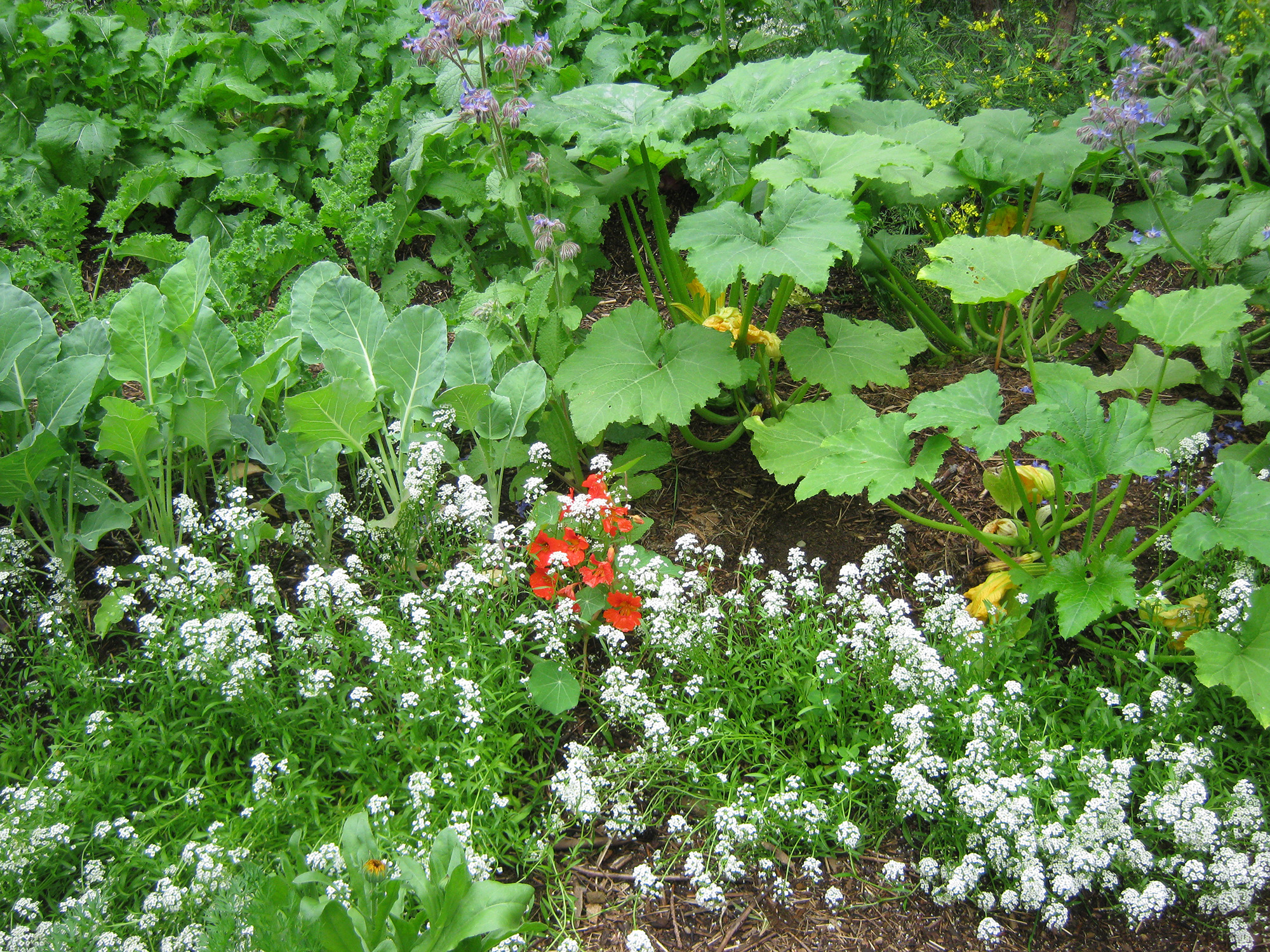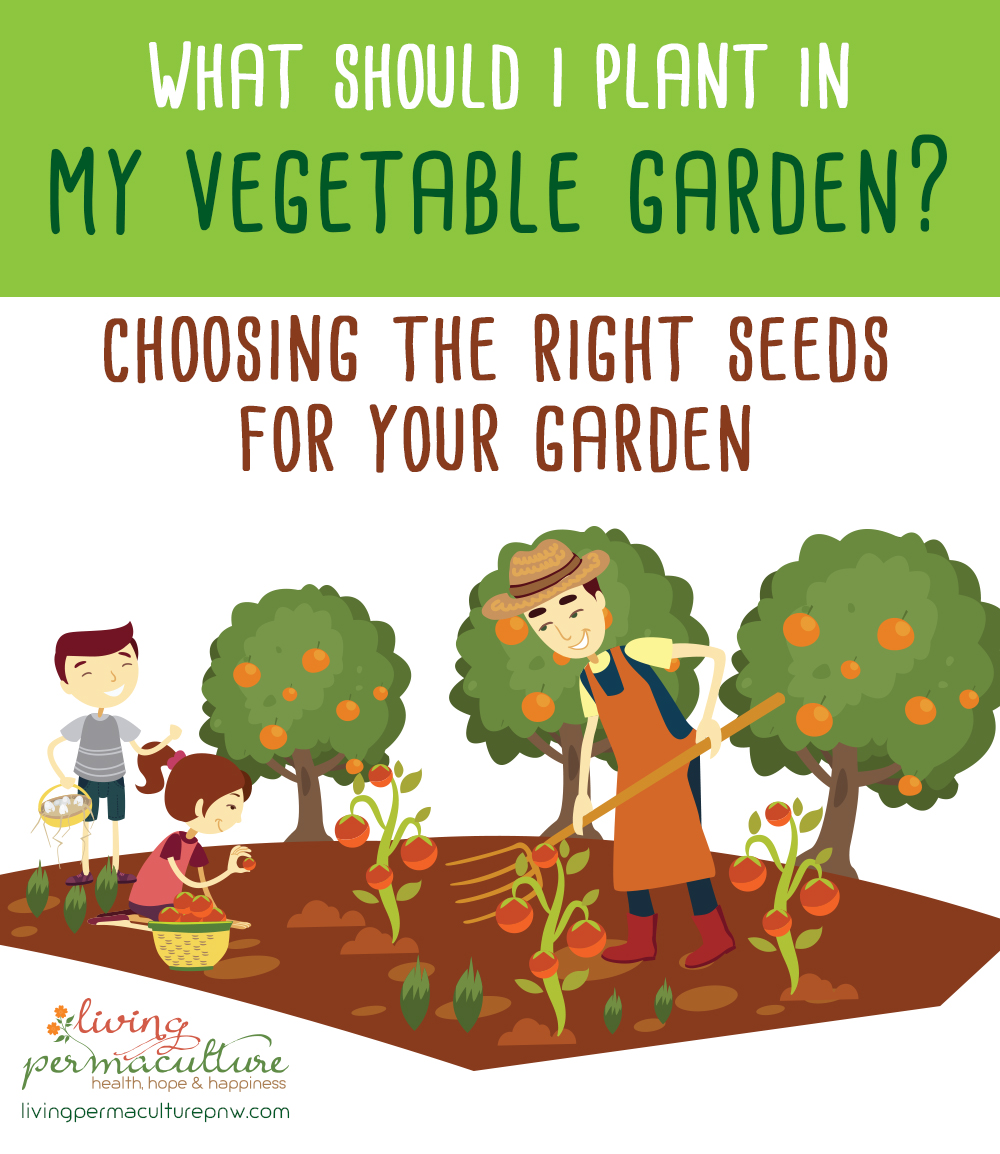
The variety of vegetable seed you plant should match the climate you live in, and the conditions of your garden. Because the limiting factor in my present garden is sunlight, it was important to choose the correct varieties of veggies.
If you’ve been asking yourself, “What should I plant in my vegetable garden?” then read on, and we’ll figure it out together.
I chose varieties with a short Days to Maturity, because I reasoned that these would have the best chance of producing well in my low-light garden.
But there are lots of vegetables that do just fine in low light situations. Many brassicas, such as mustards and kale, do very well. These are cool weather crops, so they are used to growing in the spring and fall, when the days are shorter.
Everything I planted in the garden did well – except the zucchini, but that’s another story, and had nothing to do with the lack of light. The broccoli headed out beautifully, the greens were profuse, and the flowers bloomed prolifically.

What do you like to eat?
Okay, it might seem like a no brainer, but you’d be surprised how many people plant things that they don’t really like to eat much, just because they feel that they should grow them.
So make a list of the vegetables and herbs that you use the most of during a normal week of meal making. Do you eat a lot of salads? Then greens will figure prominently in your garden; along with carrots, and whatever else you love in your salad?
Not a fan of tomatoes? Don’t plant them. There are plenty of other veggies to choose from.
The one thing I would suggest is to try to have a balance. For instance, if you love broccoli, cabbage, cauliflower, and kale, that’s all very well and good; but they all belong to the same family.
Try to mix it up a big by adding in carrots, peas and beans, tomatoes, and other non Brassica veggies. You’ll get much more balance nutrition from your garden that way.
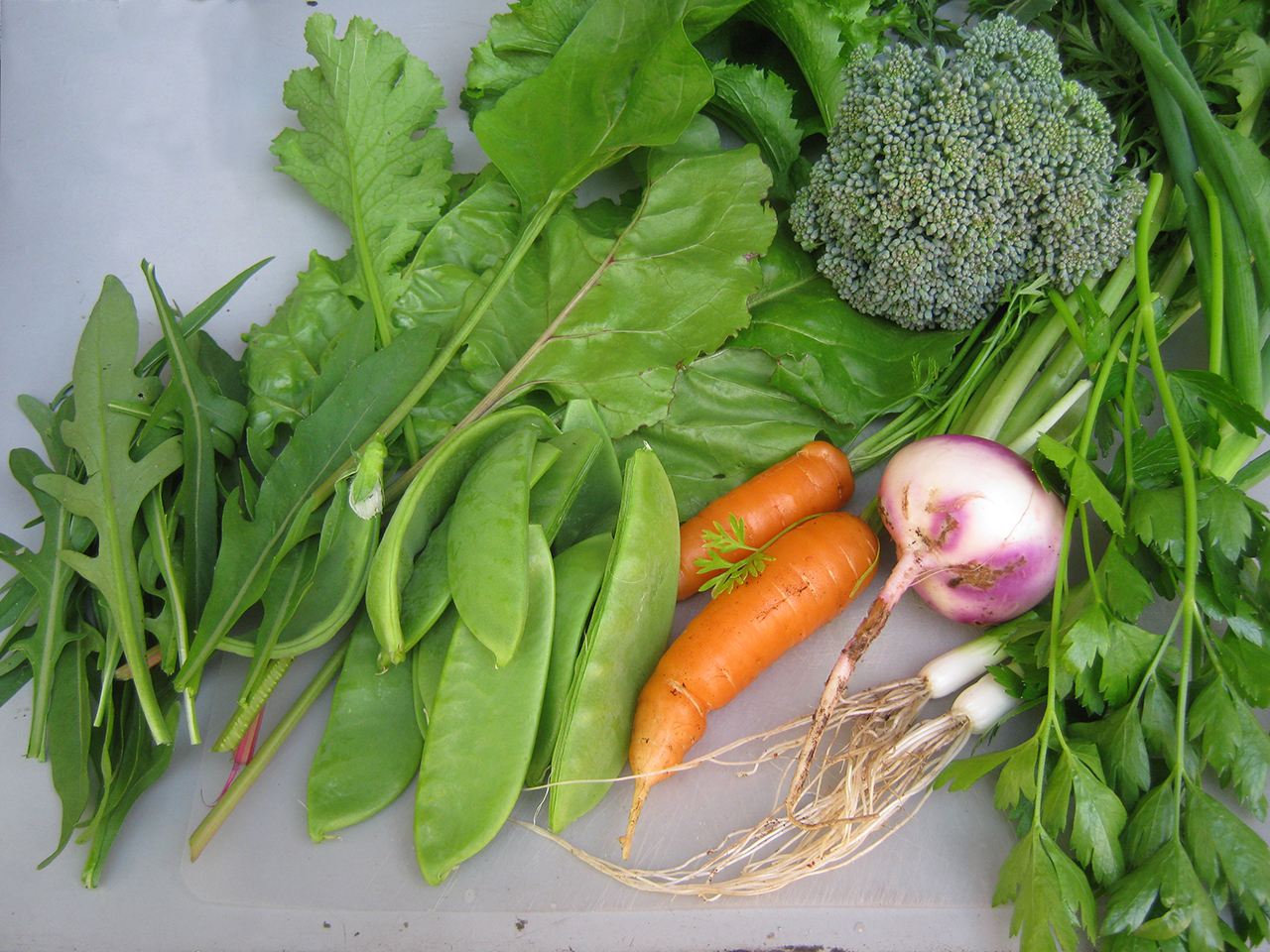
Choosing seeds
Choosing the right vegetable varieties can be pretty straightforward in a garden that gets plenty of light, plenty of water, and has good soil. But not all gardens have all of these things. So, how do you decide?
First, you have to take an inventory of your garden and yard. What is your soil type – sandy, clay, loam? How is the drainage? How many hours of sunlight does the garden get? Does it get morning/afternoon sun? What is your water source?
Most vegetables will grow in any garden that has reasonably good soil, decent drainage, enough water, and a day’s worth of sunlight. But what if you’re short of one of these?
Do not despair. You will get a harvest. You just have to choose your varieties carefully, and make the most of the positive elements your garden does have.
Of all the factors that make up a garden, lack of water and sunlight are probably the hardest to fix. If you have poor soil, you can always add amendments in the form of compost.
If you don’t have a good source of water, or you live in arid conditions, it can be costly – or impossible – to bring water in. And if you don’t have enough sunlight, but can’t cut down the trees – or move the buildings – blocking it, you’ll need to figure out the best veggies to grow in that situation, and make sure the other elements are taken full advantage of.
Here is a list of vegetables that grew well in my low-light garden situation:
- Brassicas
- Snow peas
- Black turtle beans
- Chard
- Kale
- Parsley
- Arugula
- Beets
- Turnips
- Cilantro
- Chervil
- Carrots
- Summer celery
- Lemon balm
During the height of summer, much of the garden got 8 hours, but no morning sun. In the spring and fall, when the sun is low in the sky, the trees block much of the light, and some areas – such as next to the magnolia tree – only got about 5 or 6 hours of sun. But this garden still flourished.
In permaculture, when we assess a piece of land, we look at all the factors – mapping out where the sun comes in, where the water runs, where the wind comes into the property, what the soil is like, etc. – and we try to find the best place for a garden. But sometimes we might not have a choice, so we must make do.
The point is, even though you might not think that you have the ‘right’ place for a garden, that doesn’t mean that you can’t have one. There is always something you can grow.
Breeding vegetable varieties
One great way to grow vegetables that are adapted to your growing conditions is to breed them yourself. I know that sounds really complicated – and it can be, if you take it to higher levels – but in its simplest form, it is as straight forward as saving seeds from your best plants, and planting them the next year.
Each year after that, you again save seeds from your best plants, to plant the next year. Eventually, you will have a variety that thrives in whatever conditions your garden has. Whether it is drought, wet, low-sunlight, or a certain type of soil, your plants will become adapted to the conditions, and continue to thrive year after year.
The one rule is that the seeds must be an ‘open pollinated’ variety. This means that they are not a hybrid, and will grow true to seed. If you save seeds from a hybrid variety, you will get a real mish-mash of different plants.
That can be a good thing if you’re looking for varieties to crossbreed. But if you’re just wanting to grow a particular variety, it must be open pollinated to breed true.
For a really great read on how to breed new vegetable varieties, read Carol Deppe’s book, Breed Your Own Vegetable Varieties. It is fabulous and inspiring.
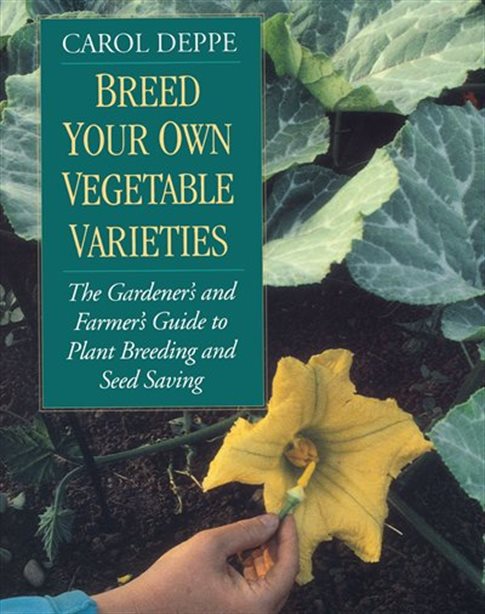
Seeds for arid conditions
Even low water situations can be induced to grow a garden. There are quite a few plants that are drought tolerant – meaning they can grow on a minimum amount of water.
There are things you can do to both conserve water and to grow successfully in low-water conditions. Hugelkultur is one of the techniques which I have adopted. The wood soaks up water, and holds it in trust for the dry season. It is said that hugelkultur really hits its stride in its third year. I’m looking forward to seeing how this garden does next year.
If you go online you will be able to research the types of plants that can do well in low-water situations. Here are a few I saw:
- Rhubarb
- Swiss Chard
- Some types of corn
- Jerusalem artichoke
- Globe artichoke
- Mustard greens
- Peppers
- Many legumes (peas and beans)
- And even some tomato varieties
I think it is well worth trying out any drought tolerant plant suggestions you find online, and seeing which ones do well on your garden. Don’t plant huge swaths of them. Just do test plots of new varieties, and plant larger plots of the things you know will work.
Each year, you will add some new varieties to your list. And, you can always try your hand at breeding vegetables that grow well in your area and conditions. You really can breed your own vegetables varieties!
Saving Seeds
If you’re going to breed your own vegetables – or even if you’re not – learning to save seeds is an important skill to have. And it’s not a difficult skill to learn.
It’s all very well and good to pop down to the garden center and pick up your little packets of seeds for the garden this year. But what happens if there is a supply-chain breakdown (or a Zombie Apocalypse) and there are no seeds to buy? You’d better hope you took my advice and learned to save your own seeds.
And it is seriously not that hard. Plants make seeds all on their own. You just have to leave them alone, let them flower and go to seed, and stop watering them as the seeds dry down.
Then you cut the plants, shake the seeds off into a barrel, bucket, box, or whatever works for you. Just make sure to put them in something clean and dry; and make sure it doesn’t have any holes in it.
Once you have the seeds off the plants, you must dry the seeds further. If you want your seeds to have any longevity, you must make sure they are super dry. Any moisture will just make them rot. A dehydrator works well, either solar or electric.
Of course, there’s more to the story, and I will be talking about this more in the future. I just wanted to put the seed of the idea in your head, so you start thinking about it.
It’s pretty darn satisfying planting your own saved seeds in the garden the next year. And the book mentioned above – Breed Your Own Vegetable Varieties, by Carol Deppe – has some great seed saving information in it; as does her other book (and my other favorite gardening book) The Resilient Gardener: Food Production and Self-Reliance in Uncertain Times.
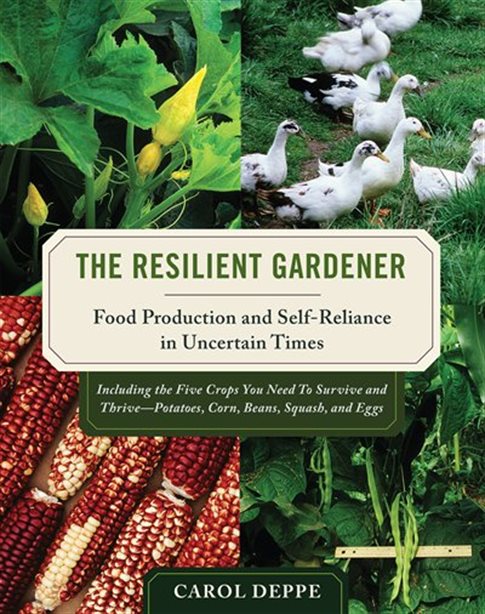
Just start planting
When it comes right down to it, the best advice I can give is to try everything. Try different varieties. Try different ways to retain water in your soil. Try different planting and timing techniques and strategies. Try saving your own seed, and breeding your own vegetable varieties.
If you’re worried about the cost of seeds, you can buy inexpensive seeds here. Seeds Now! sells cheap, organic, non-gmo seeds, at much lower prices than most. Grab some and get planting!
Seeds Now! is not taking orders at the moment, due to COVID-19 and being swamped.
=>> Please try Botanical Interests, as they are still delivering! <<=
Whether you’re just getting started, or are an experienced gardener who wants to try your had at breeding your own vegetable varieties, it’s okay to go for the inexpensive seeds. You can clean them up over a couple of seasons of growing if they have any rogue seeds in them. Carol’s books will show you how.
And if you’re experimenting, you can’t always afford to buy the high-end seeds. Just get started! Things will grow, food will be harvested, and knowledge will be gained. And you can’t ask for more than that.
If you have any questions, comments, or funny gardening stores, please plunk them in the comment box below. I love to hear from my readers.
Health, Hope & Happiness
Tracy
This article may contain affiliate links. If you click on a link and make a purchase, I will receive a small commission, at no extra cost to you. See the full Affiliate Disclosure here.
